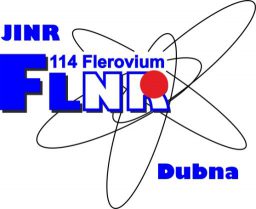Developing the network knowledge base on nuclear physics
![]() Web Knowledge Base on Low Energy Nuclear Physics
Web Knowledge Base on Low Energy Nuclear Physics
The project is aimed to development, filling and net support of the “Knowledge base on low-energy nuclear physics” allocated in the Web. The nuclear physics knowledge base developed at FLNR solves the two following problems.
- Fast and visual getting of experimental data on nuclear structure and cross sections of nuclear reactions, a possibility for processing these data, their comparison and plotting the studied regularities and systematizations.
- Analysis of experimental data and modeling the processes of nuclear dynamics within the foolproof codes based on the well-established physical approaches just in a window of the Web-browser.
A set of coupled with each other algorithms of nuclear dynamics, experimental data bases on nuclear structure and nuclear reactions, and a system of special net codes for analysis, management, representation and handling of user’s queries and obtained results of calculations form altogether what is usually called “knowledge base”.
There are three fundamental distinctions of the created nuclear knowledge base from already existed nuclear databases.
- The available nuclear databases, as a rule, supply users with ordinary text files of tabular information. Thus, even to get some simplest systematization, user ought to chose one by one and retype in a separate file the data needed to him, and then he hast to use some independent graphical package to plot these data. Our knowledge base contains special programs for graphic representation of the data, performing their comparative analysis and obtaining systematizations of all kinds over a group of nuclei or the whole nuclear map.
- Our databases on the experimental cross sections of nuclear reactions contain the digitized data. Besides significant simplification of their control, this allows one to perform overall processing these data, make graphical comparison of the cross sections with each other and, finally, analyze these data within the theoretical models. All this is performed directly in a window of the Web-browser without a search and downloading any additional computational codes and graphical packages.
- The complicated computational programs of modeling low-energy nuclear dynamics (elastic scattering, transfer, fusion, and so on) are the main part of the developed system.
Taken together with experimental data on nuclear properties they just form the “nuclear knowledge base”. Organizational net management of all these codes (graphical interface, simplicity of use, wide branched menu, hyper-text prompts and descriptions of the models, graphical representation of the results, interplay with remote user at long-time calculations and, at last, multi-user net access) is a basic problem of creating such kind of knowledge base.
In our low-energy nuclear knowledge base you may find most of available experimental properties of all known nuclei and also the digitized experimental data on the cross sections of different nuclear reactions (not fully completed yet).
 |
Nuclear map |
 |
Elastic scattering data, Fusion cross sections, Yields of evaporation residues |
A set of computational codes realising most of theoretical models of low-energy nuclear dynamics is the main part of our knowledge base. For the moment the following models of nuclear dynamics are already available for any remote user via ordinary Web-browser:
| Classical and Optical Model of elastic scattering | |
| Distorted Wave Born Approximation model of inelastic scattering | |
 |
Empirical and microscopic Channel Coupling models of near-barrier heavy-ion fusion |
| Calculation of the nucleus-nucleus driving potentials (proximity, folding, two-center shell model) | |
 |
Simplified shell model of nuclei |
| Decay widths and survival probability of excited nuclei | |
 |
Kinematics of 2-body and 3-body nuclear reactions |
| Q-value calculator |
